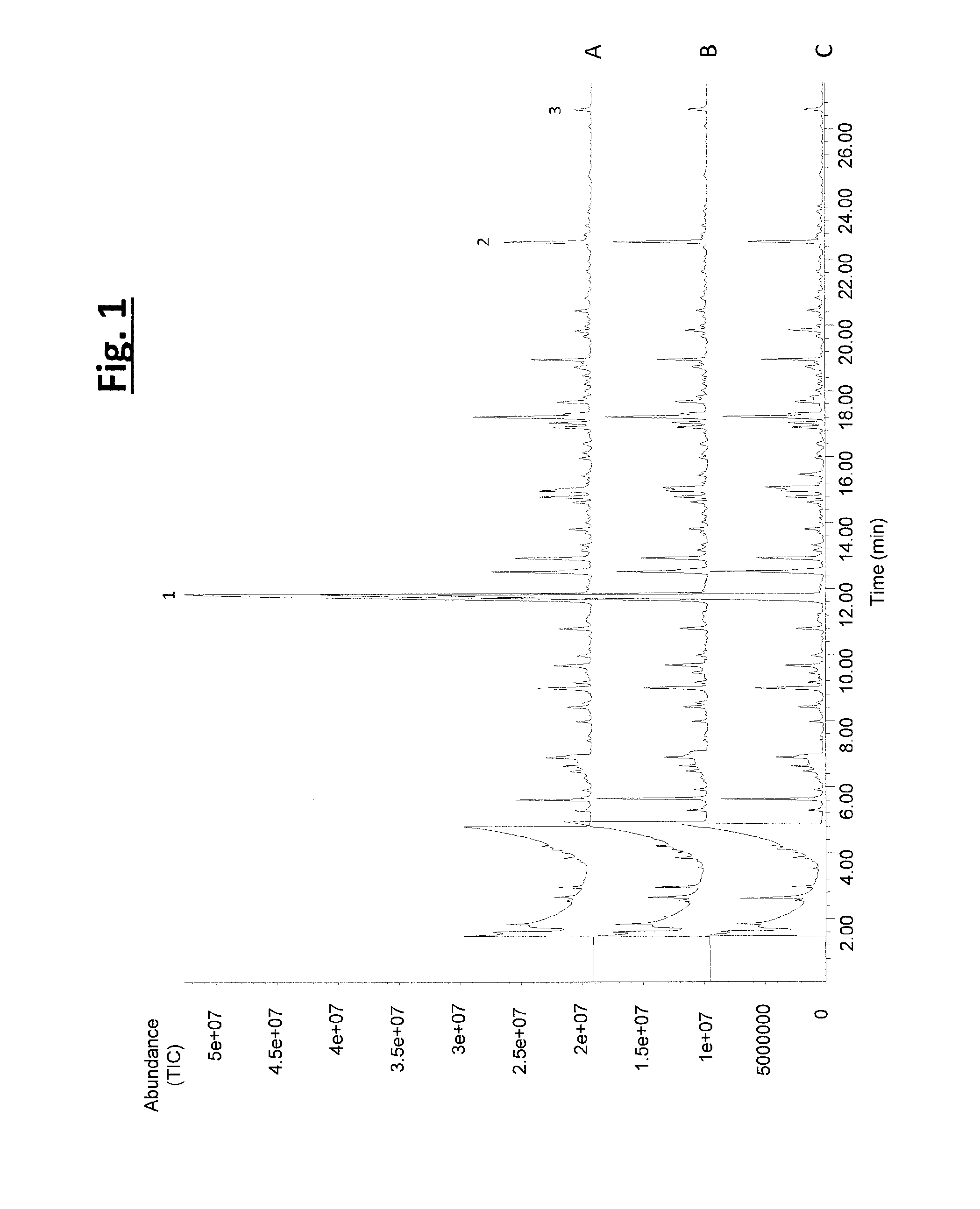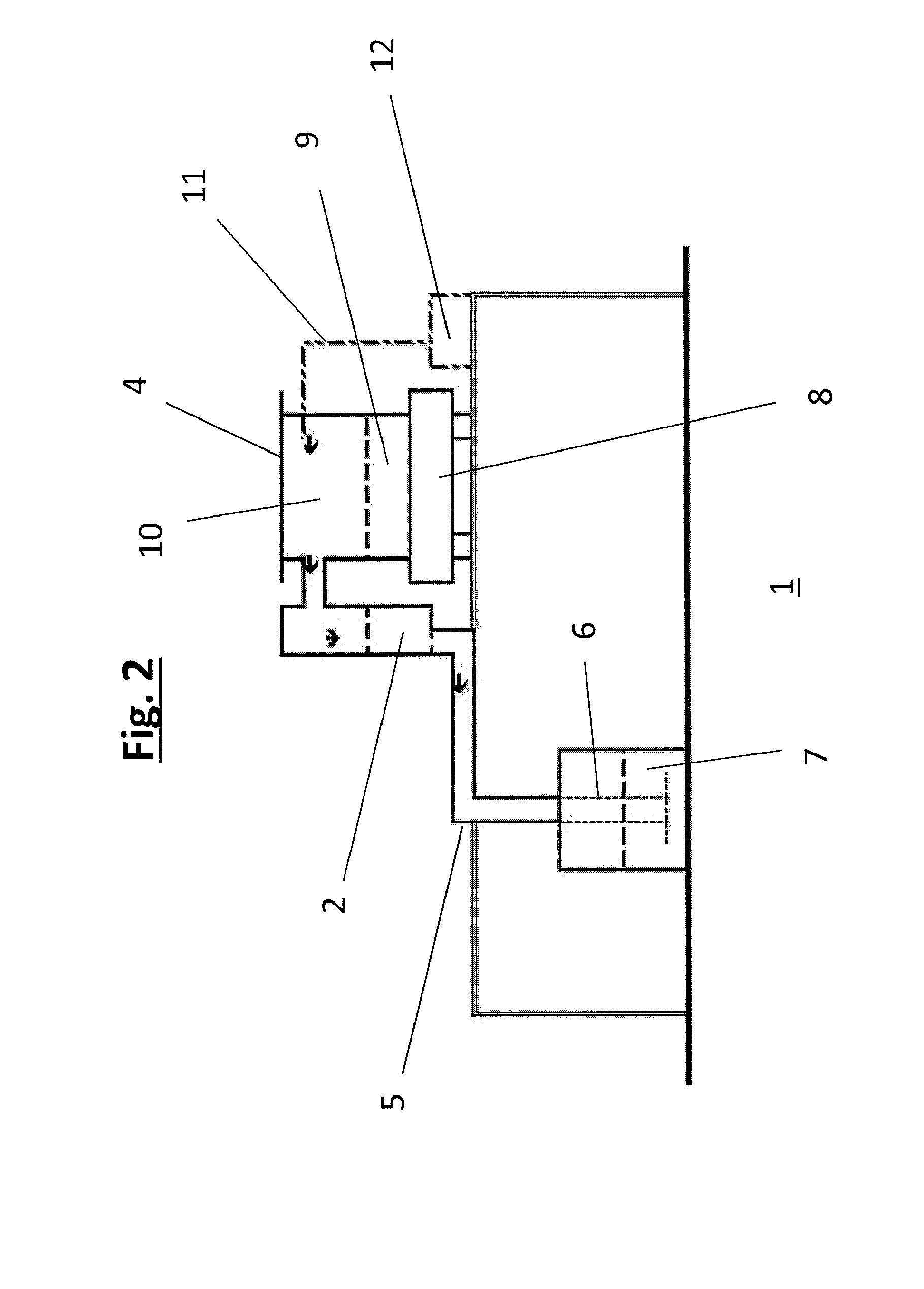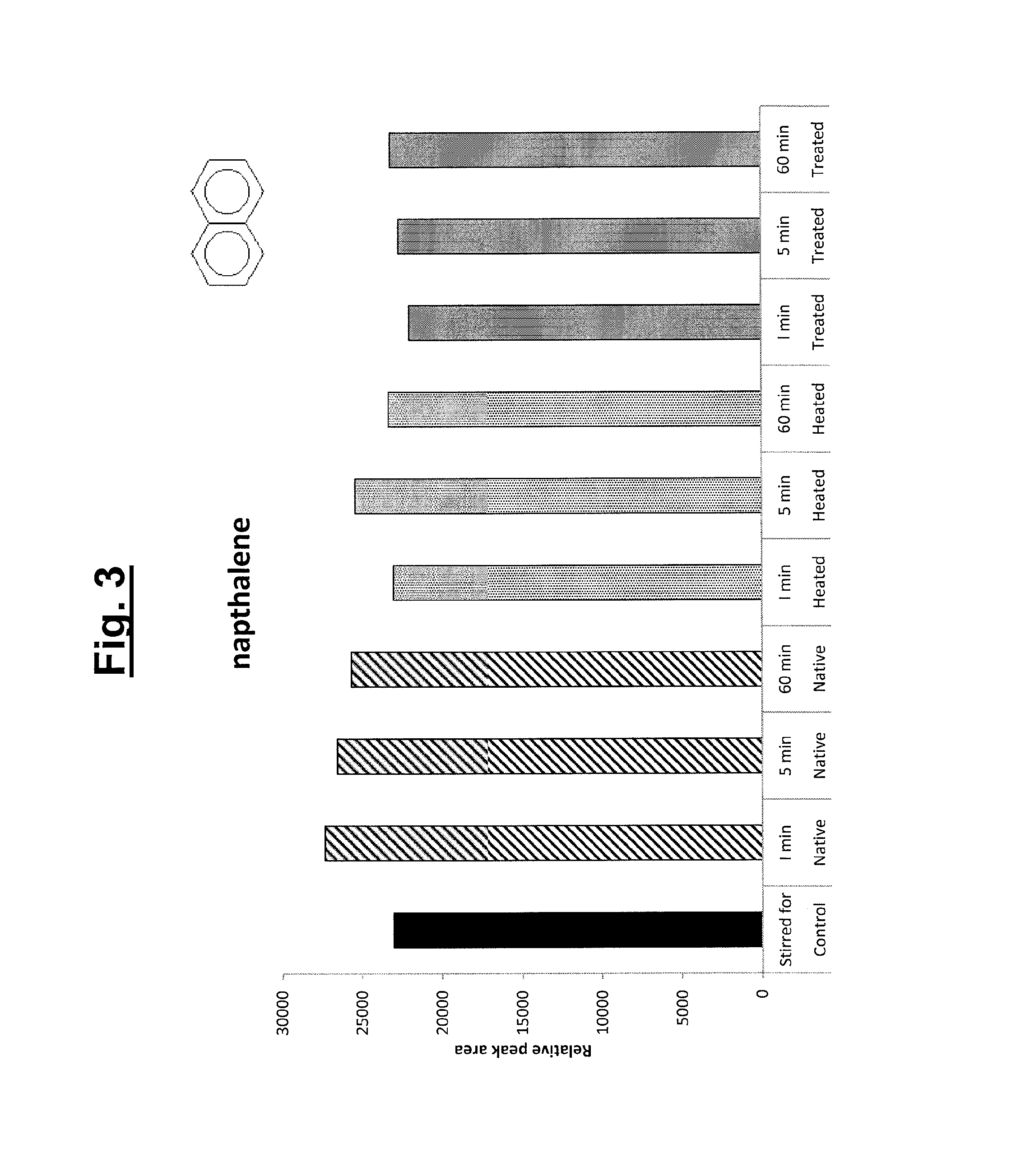Smoked food, method for smoking food and apparatus therefor
a technology for smoking food and food, applied in the field of methods for smoking food, can solve the problems of adversely affecting the smoke flavour or the flavour of smoked foods, chemical contaminants are formed, etc., and achieve the effect of producing smoke flavourings with certain pah levels and facilitating the provision of smoked foods
- Summary
- Abstract
- Description
- Claims
- Application Information
AI Technical Summary
Benefits of technology
Problems solved by technology
Method used
Image
Examples
example 1
Analysis of PAH Level in Smoke
[0091]Smoke was produced, treated and collected in a pressurised apparatus. Untreated smoke was produced by heating over a gas burner a standard conical flask, which comprised an inlet located in a stopper and a hose outlet located on the side of the flask, containing 20 g of chipped oak (report recites 20, 40 and 100 g). Air was pumped into the inlet carrying smoke out from the flask via a hose on the outlet to a condenser formed by second standard conical flask, which comprised an inlet located in a stopper and a hose outlet located on the side of the flask, cooled by an ice bath.
[0092]Uncondensed smoke was carried by the air flow under pump pressure from the condenser and split to the inlets of two identical chromatography columns, a first treatment column containing 10 g of granular clinoptilolite (grain size 1-2.5 mm, pore size 0.39-0.54 nm) and a second control column containing 70 g of ceramic ‘anti-bumping’ granules and 4 g of sand. Loading the ...
example 2
Level of PAH in Smoked Food Samples
[0100]Aliquots of water and of tomato ketchup and tomato juice (commercially available) were bubbled with filtered smoke treated with the clinoptilolite filter as described in Example 1, all for approximately 3 minutes duration.
[0101]The aliquots were tested for taste and compared with controls that had been bubbled with unfiltered smoke in parallel for the same duration.
[0102]The effect of using filtered smoke was assessed by tasting the aliquots on the tongue and by drinking the water and the juice. The treated smoke yielded samples that had a distinctive smoky flavour, similar in its smoky components though slightly less intense than the flavour achieved using untreated smoke. The untreated smoke yielded samples that imparted a noticeably astringent, alternatively described as acrid or burning, sensation in the mouth, especially around the jowls. This sensation was absent in the samples smoked using treated smoke.
example 3
Preparation Of Filter Materials
[0103]A filter of the invention was prepared following this protocol, the resultant material being referred to as treated filter or treated clinoptilolite:
For the Preparation of 600 g of Clinoptilolite Filter Material
[0104]Dissolve 636 g ammonium chloride in 6 litres de-ionised water.[0105]Add 600 g clinoptilolite.[0106]Soak for 24 hours.[0107]Stir the mix at timely intervals.[0108]Strain the mixture and place recovered clinoptilolite in a tray.[0109]Dry at 270 degrees C. for 3 hours.
[0110]An alternative filter of the invention was prepared following only the heating element of the protocol, i.e. omitting the pre-treatment with ammonium chloride, the resultant material being referred to as heated filter or heated clinoptilolite.
PUM
| Property | Measurement | Unit |
|---|---|---|
| size | aaaaa | aaaaa |
| size | aaaaa | aaaaa |
| pore size | aaaaa | aaaaa |
Abstract
Description
Claims
Application Information
 Login to View More
Login to View More - R&D
- Intellectual Property
- Life Sciences
- Materials
- Tech Scout
- Unparalleled Data Quality
- Higher Quality Content
- 60% Fewer Hallucinations
Browse by: Latest US Patents, China's latest patents, Technical Efficacy Thesaurus, Application Domain, Technology Topic, Popular Technical Reports.
© 2025 PatSnap. All rights reserved.Legal|Privacy policy|Modern Slavery Act Transparency Statement|Sitemap|About US| Contact US: help@patsnap.com



